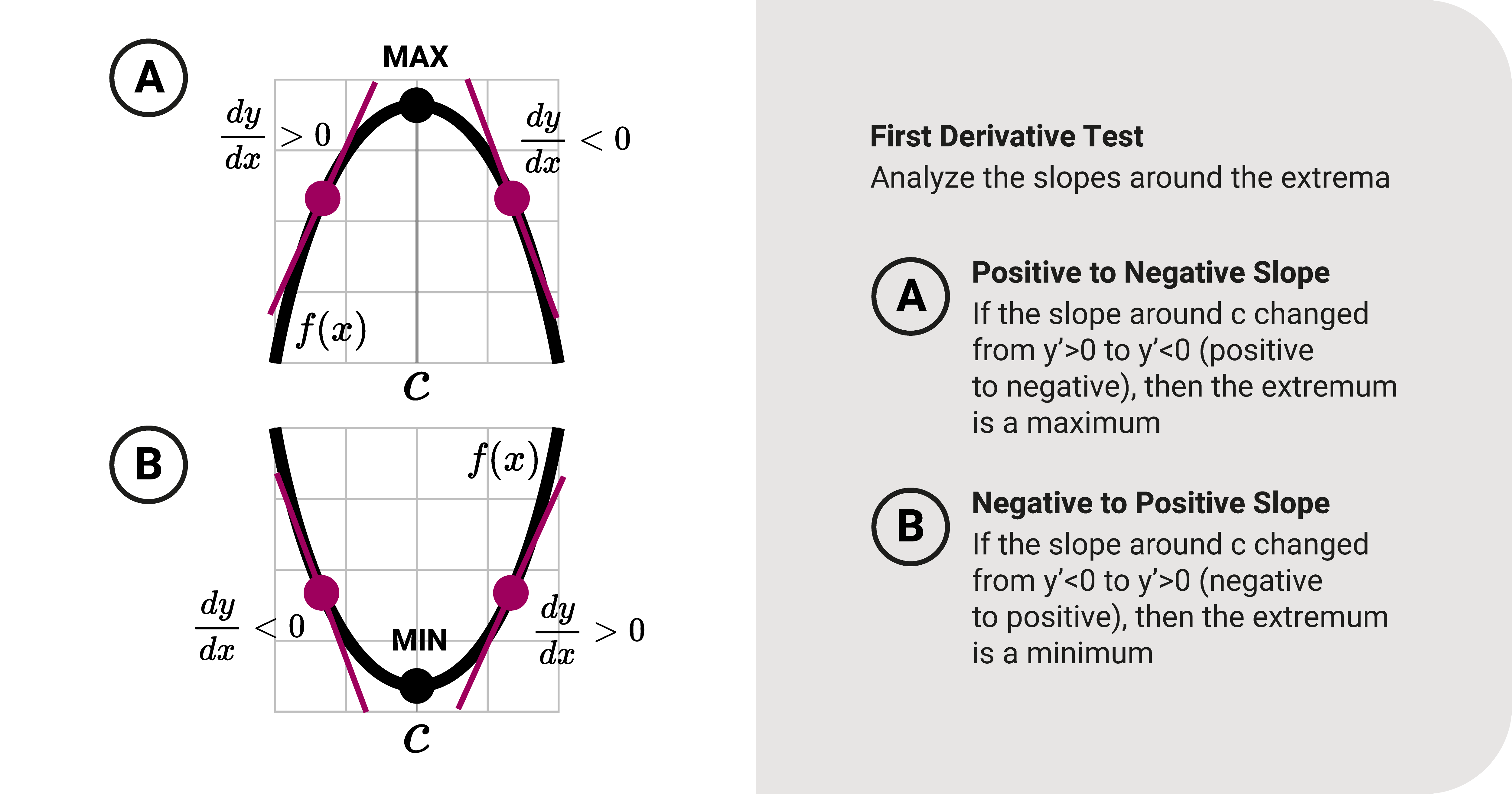We can check if an extremum is a maximum or minimum by performing some tests. In this post, we'll explore the two types:
- First Derivative Test
- Second Derivative Test
First Derivative Test

Let's consider the first test. We use the first derivative to classify an extremum.
Consider a function \(f\) and a specific interval. Also, assume there is a critical point, \(c\), so there is an extremum. To classify whether it is maximum or minimum:
- The extrema is a maximum if the slope \(y^{\prime}\) around \(c\) changed from positive to negative (function increased then decreased).
- The extrema is a minimum if the slope \(y^{\prime}\) around \(c\) changed from negative to positive (function decreased then increased).





